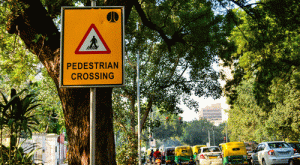 India needs a well resourced and empowered national road safety agency – a central unit that would coordinate the efforts of all stakeholders, writes Justin Runji, Senior Transport Specialist, World Bank
India needs a well resourced and empowered national road safety agency – a central unit that would coordinate the efforts of all stakeholders, writes Justin Runji, Senior Transport Specialist, World Bank
India is facing a growing road safety crisis: over the last decade, road fatalities have increased significantly to reach 22.6 per 100,000 population (2016 WHO estimates). That means almost 300,000 people lose their lives on Indian roads every year—a tragedy for the victims’ families, and a serious burden on socioeconomic development.
The country has taken several commendable initiatives to stop the carnage, including a road safety policy based on the 4-Es: Education, Engineering, Enforcement, and Emergency care. Also notable is the application of UN regulations on vehicle standards (UNECE WP. 29) which encourage vehicle manufacturers to apply technologies such as safer bumpers, bonnets, and windshields, to reduce the risks to pedestrians.
One important tool that is missing from this arsenal, however, is a wellresourced and empowered national road safety agency – a central unit that would coordinate the efforts of all stakeholders and assume full responsibility on the country’s road safety outcomes. While implementation of road safety rests primarily with the respective State Governments, India’s Ministry of Road Transport and Highways would benefit from a crosssectoral nodal road safety agency with the mandate to guide and ensure consistency in policy interpretation and application, better coordination, monitoring and evaluation, national goal setting, and follow-ups.
At the state level, road management responsibilities have generally been shared among individual agencies that each focus on specific areas such as traffic management, road infrastructure, transport, and health, often with little coordination. Although three different states have established their own lead agencies—Tamil Nadu, Karnataka, and Kerala—these have limited power and resources and have been confined mostly to an advisory and monitoring role.
A fourth state, Gujarat, recently created its own agency, but decided to take a different approach. The Gujarat Road Safety Authority (GUJROSA) is in charge of prescribing and enforcing road safety standards and procedures across the state, and of overseeing the implementation of all laws relating to road safety—a mandate that goes far beyond the advisory and coordination role of other state agencies. Notably, GUJROSA can hold any public official, public or private entity or institution accountable for non-compliance with its orders. The Authority is composed primarily of key public sector stakeholders, but also includes a non-governmental body, the West India Automobile Association, as well as two independent experts in road safety. Most of GUJROSA’s budget will come from the Gujarat Road Safety Fund, which is supported primarily through traffic violation fees and state government allocations. This is another remarkable feature that provides the agency with a great deal independence and flexibility.
 The collaboration between the World Bank and Gujarat State played a key part in the creation of the agency. Back in 2012, with the support of the World Bank-led Global Road Safety Facility, a Road Safety Management Capacity Review was conducted, and its recommendations incorporated into the design of the Second Gujarat State Highways Project (GSHPII), then under preparation. Two noteworthy recommendations that formed part of the project’s road safety component were: the establishment of a steering committee to lead and manage the road safety component; and the creation of a state lead agency. GSHPII was approved in December 2013 and at project effectiveness in December 2015, the State had already formulated and adopted a road safety policy which, inter alia, advocated the creation of a lead agency. In parallel, the Bank facilitated several workshops and knowledge exchange activities to inform the design and implementation of the agency. The lead agency has been realized faster than expected under GSHPII, now in its fourth year of implementation and two years before closure. Kudos to the State as well for the self-drive and proactivity.
The collaboration between the World Bank and Gujarat State played a key part in the creation of the agency. Back in 2012, with the support of the World Bank-led Global Road Safety Facility, a Road Safety Management Capacity Review was conducted, and its recommendations incorporated into the design of the Second Gujarat State Highways Project (GSHPII), then under preparation. Two noteworthy recommendations that formed part of the project’s road safety component were: the establishment of a steering committee to lead and manage the road safety component; and the creation of a state lead agency. GSHPII was approved in December 2013 and at project effectiveness in December 2015, the State had already formulated and adopted a road safety policy which, inter alia, advocated the creation of a lead agency. In parallel, the Bank facilitated several workshops and knowledge exchange activities to inform the design and implementation of the agency. The lead agency has been realized faster than expected under GSHPII, now in its fourth year of implementation and two years before closure. Kudos to the State as well for the self-drive and proactivity.
While GUJROSA is off to a strong start, the project teams will work towards boosting the capacity, effectiveness, and impact of the agency. As we move ahead, one of our priorities will be to monitor results as closely as possible— believing that hard data is the best instrument we can use to make the case for expanding the GUJROSA model to other states, for showing the relevance of a concerted approach, and for helping our counterparts make informed decisions about road safety. The lives of 300,000 people a year are at stake.
 TrafficInfraTech Magazine Linking People Places & Progress
TrafficInfraTech Magazine Linking People Places & Progress


